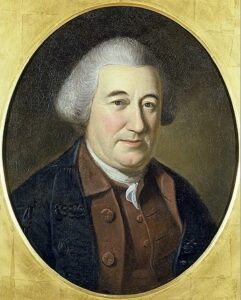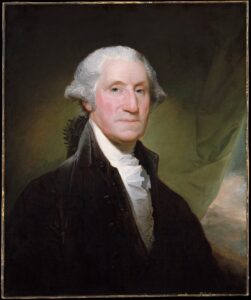Jul
3
Was George Washington REALLY the USA’s First President?

In case you are wondering, the titular question (or some form of it) is one of those that historic mythbusters like to test regular folk with. I don’t typically count myself as a “mythbuster”, but I do like trivia, and I thought this topic appropriate to address as we Americans celebrate Independence Day.
Before answering the question, let’s step quickly through some history….
In the run-up to the American Revolution, delegates from 12 of the 13 colonies formed the First Continental Congress in 1774. Virginian Peyton Randolph was elected as the first “president” of the Congress. When Randolph fell ill, Henry Middleton (1774) took over for the remaining four days of the session. The Second Continental Congress convened after the Battles of Lexington and Concord (1775), and Randolph was re-elected as president. But, his time was cut short again when he was summoned back to Virginia, so John Hancock got the job.
Hancock served the longest term (~2 years, 5 months), and it was during his tenure that the Congress officially declared the independence of the Colonies — now “united States” — from Great Britain (1776). Hancock was succeeded by Henry Laurens (1777), John Jay (1778), and Samuel Huntington (1779). While Laurens held the position when the Articles of Confederation was passed by Congress (Nov. 15, 1777), Huntington was “president” when the last state, Maryland, finally ratified it (Feb. 2, 1781). At this time, the Continental Congress was renamed the Congress of the Confederation. Thomas McKean (1781) took over as president of Congress when Huntington became ill.

John Hanson (also 1781) then became the first president of Congress elected under the Articles of Confederation. This is significant, because the new nation finally had an official national government. Keep in mind, though, that this “president” (like those before him) had little authority, as he only “presided” over congressional meetings and (by custom) signed acts and letters on behalf of and as directed by Congress. Hanson was succeeded by Elias Boudinot (1782), Thomas Mifflin (1783), Richard Henry Lee (1784), John Hancock (again, 1785), Nathaniel Gorham (1786), Arthur St. Clair (1787), and Cyrus Griffin (1788).
Recognizing certain weaknesses in the Articles of Confederation, Congress convened the Constitutional Convention of 1787 — presided over by beloved and respected General George Washington — to develop a better, stronger system of government for the new nation. The Constitution of the United States was ratified June 21, 1788, and became effective as of March 4, 1789, thus ushering in a very new form of government. For our purposes, there was no more office called the “president of the United States in Congress Assembled” (aka “president of Congress”), and the Congress of the Confederation was itself revamped and renamed as the “United States Congress”. The Electoral College was created. All executive function was moved to the Executive Branch, which was led by… the “President of the United States”. The first of those elected by the people to this new office was of course George Washington, who served from Apr. 30, 1789 to Mar. 4, 1797.
So, my fellow Americans, who can rightfully be called our nation’s first President? Peyton Randolph, who presided over the First Continental Congress? John Hancock, who was “president” when the Declaration of Independence was adopted? Samuel Huntington, who had the position when the Articles of Confederation was fully ratified? John Hanson, the first duly elected “president of the Confederation Congress”? Cyrus Griffin, the presiding officer over Congress at the time of the Constitution’s ratification? Or, George Washington, first “President of the United States” elected by the people under the U.S. Constitution?

To narrow it down a bit, some people consider Huntington, Hanson, and Washington as “the fathers of our country and the nation’s first Presidents.” The Hanson-was-first-president crowd may be the loudest and seem to have a slightly stronger case among the “alternates”. But, for my money, I’m sticking with Washington. The Continental Congress was more of an interim government while the fledgling nation established itself before the world, and as explained earlier, the office of “president of Congress” had no authority in itself. Or, as historian Edmund Burnett wrote:
“The president of the United States is scarcely in any sense the successor of the presidents of the old Congress. The presidents of Congress were almost solely presiding officers, possessing scarcely a shred of executive or administrative functions; whereas the president of the United States is almost solely an executive officer, with no presiding duties at all. Barring a likeness in social and diplomatic precedence, the two offices are identical only in the possession of the same title.”
Labels aside, the executive office is the sort of “president” most have in mind when speaking of presidents of the United States, and Washington was clearly the first and one of the best.















